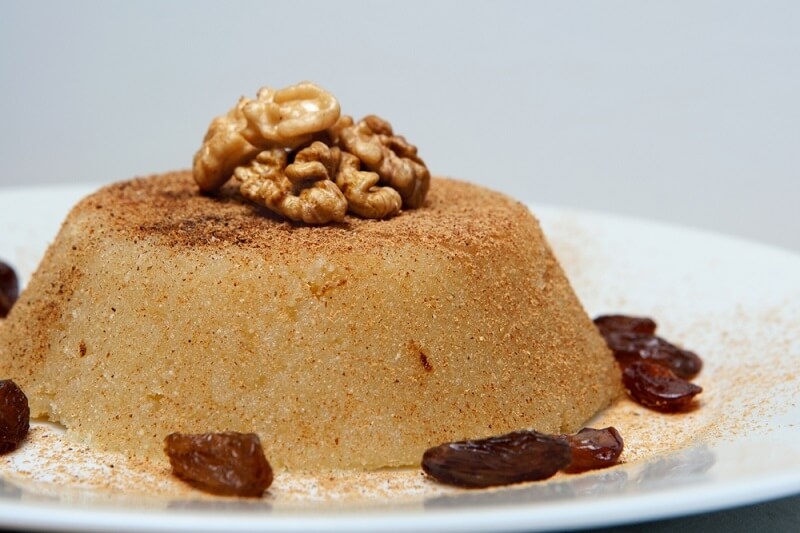
Rarely can we find a dessert that presents the same long cultural journey and transcends cultures as does Persian halvah. For centuries, halvah has satisfied taste buds. With a delightful crumbly yet melting quality, along with a nutty flavor, halvah is more significant than a simple dessert; it has garnered its place in the cultural experience of desserts across the Middle East and beyond, cherished equally in celebration or ceremony as in the simple expression of everyday joy. Persian halvah comes from ancient Persia: a treat shared with families, friends, and strangers, traversing time and cultures, developing innumerable adaptations with different iterations and flavors, all while upholding its soul-soothing character.
Halvah is made from simple yet magical ingredients like tahini, sugar, and spices, which ground us into the mindfulness of traditional craftsmanship with every bite. Halvah captures the hearts of the modern food enthusiast, whether served plain for breakfast or re-imagined with chocolate (chocolate halvah or chocolate-covered halvah); halvah will continue to delight. In this exploration of halvah, you will also discover the royal origins of halvah, some halvah recipes that have lasted generations, and why halvah has always been a favorite. Are you ready to learn why halvah stands the test of time? Let’s get started!
Halvah has a long history, dating back to the Middle East and Persia. The term "halvah" comes from the Arabic word "halwa," which refers to "sweet." Even though every culture has its variation of halvah, Persian halvah is unique in terms of ingredients and preparation. Halvah was traditionally made as a devotional offering for religious and funeral services to convey goodwill and remembrance.
While Persian halvah is typically a cultural and religious sweet, it is also popular as a homemade sweet handed down through generations. Families take pride in their unique halvah sweet, often keeping their recipe a secret. Making Persian halvah involves a lot of care and detail, which is part of the culinary art of Persian cuisine and emphasizes balance and harmony of flavor.
Must Read: Savoring Persian Breakfast: A Culinary Journey Through Iran
Persian halvah is mainly created with simple but flavorful ingredients. The essential halvah elements typically include:
Making Persian halvah is a complex operation. The flour is slow-roasted in oil or butter until dark golden brown, releasing a fragrant, nutty aroma. Then, sugar, saffron, and rosewater are added, stirring continuously to ensure it remains smooth. Once the halvah has reached the appropriate texture, it is spread in a tray, sprinkled with nuts, and left to cool before slicing into squares or diamonds.

While traditional Persian halvah is the most celebrated, there are a variety of halvah options that satisfy various palates. These include:
As the world understands gastronomy better, Persian halvah is used in modern recipes and desserts. Cooks and food lovers are including halvah in cakes, cookies, and ice creams, combining flavors of yesterday and today!
Chocolate-covered halvah has become en-vogue as a gourmet dessert, consumed by people from the specialized Persian world and dessert lovers.
Halvah recipes are also evolving for health-conscious consumers. Vegan and gluten-free halvah, sweetened with different sweeteners and healthy oils, is being marketed to the growing foodies who want flavor and health.
Making Persian halvah at home is an enriching experience that allows you to customize flavors. Here’s a simple yet authentic Persian halvah recipe you can try:
Despite being a sweet indulgence, Persian halvah contains several nutritional benefits. The ingredients used in halvah contribute to its health-promoting properties:
While halvah should be consumed in moderation due to its sugar content, it remains a wholesome dessert when prepared with high-quality ingredients and natural sweeteners.
Persian halvah can be found at specialized Middle Eastern stores, Iranian bakeries, or online. Many Iranian families still make halvah at home, ensuring the authenticity of the flavors. For gourmet alternatives, chocolate halvah and chocolate-coated halvah are becoming more common in artisanal dessert shops. Online markets also have several halvah options ranging from traditional Persian recipes to modern variations that include chocolate and nuts. If you can travel to Iran, trying freshly made halvah from a local sweet shop is an experience you won't forget.
Also Read: Persian Kabab Koobideh Recipe: Juicy and Authentic Guide
Persian halvah is more than just a dessert; it symbolizes tradition, love, and craftsmanship. Whether enjoyed as a nostalgic homemade treat or discovered in a modern gourmet setting, this sweet delight continues to captivate hearts and palates worldwide. The diverse variations, from classic to chocolate halvah, make it an adaptable dessert suitable for all occasions.
If you haven’t tried Persian halvah yet, it’s time to indulge in this time-honored delicacy and experience the rich flavors of Persian culinary heritage.
This content was created by AI